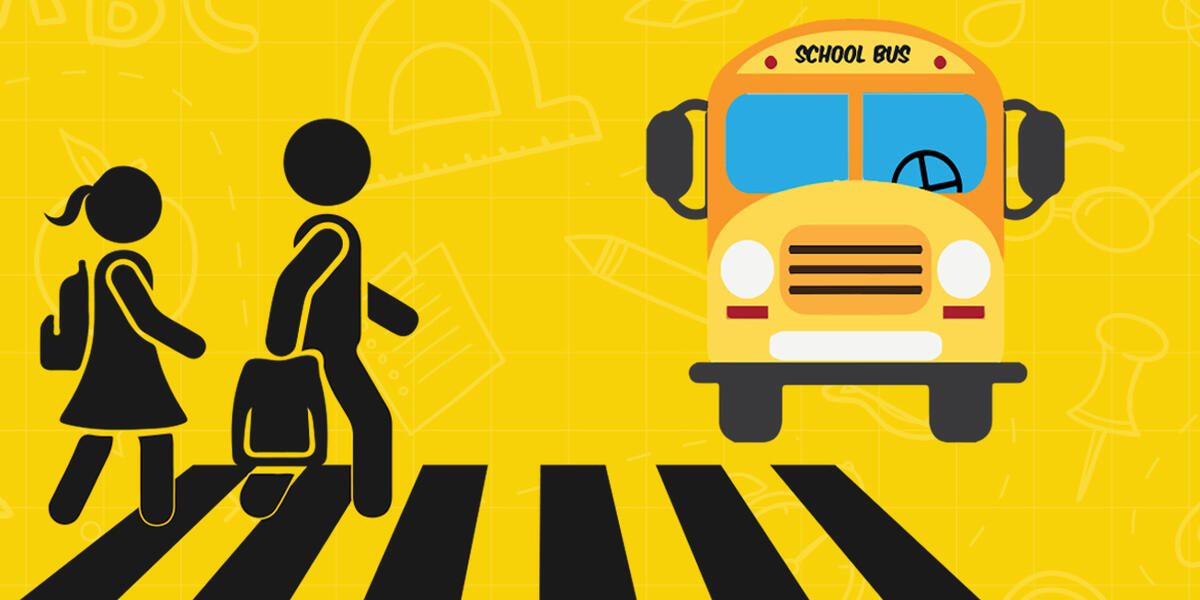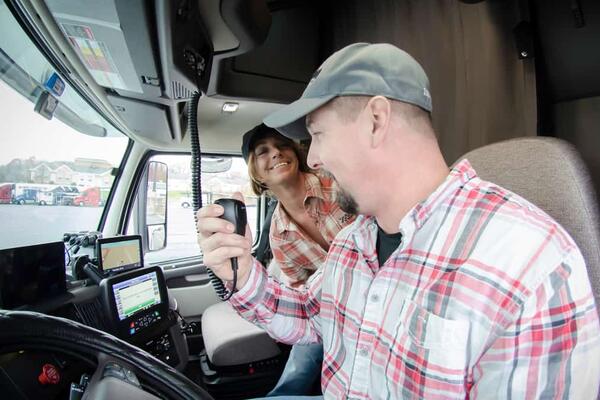In the next two weeks we will see many students returning to school after the summer break. For some of these students this will be the first time since the pandemic started that they will be returning to school in person. Pedestrian-vehicle injuries are a leading cause of death for children ages 5 to 14. That means your drivers need to step up their safety around school zones, crosswalks, bus stops and wherever children may be playing outside. Here are some back-to-school tips:
1. Be familiar with school zones. Get in the habit of noticing where school zones and crosswalks are on routes that you normally take. Accidents, including pedestrian accidents, are far more likely to occur locally on routes with which drivers are more familiar and comfortable.
2. Stop for school bus lights. Always stop for school buses with flashing red lights. Drivers approaching the bus must come to a full stop for the duration that the red lights are on. Some school buses have flashing yellow lights also, which means that drivers may proceed with extreme caution. Bus drivers often engage the flashing yellow lights before the flashing red lights, signaling that they are about to stop.
3. Obey crossing guards. School crossing guards are given police training and the same authority as local traffic police in most areas, so disobeying a crossing guard could get you in some serious trouble. Remember that driving on major streets where crossing guards and crosswalks are observed is safer than taking "short-cut" side streets where children may be unattended.
4. Anticipate the worst. The speed and distance away of oncoming cars is more difficult for young children to judge. Always anticipate the chance that a small child may run in front of you by slowing down and preparing to brake.
5. Be careful around parked vehicles. Be especially careful in areas with parked vehicles on the side of the road. Children waiting to cross may be especially difficult to see behind parked sport-utility vehicles.
6. Turn your headlights on. Drive with headlights on in areas with children and pedestrians. The AAA says that the use of headlights can reduce pedestrian accidents by about 25 percent.
7. Avoid using cell phones when driving. Cell phones are a known distraction. Never use hand-held cell phones while driving, and never use hands-free cell phones while driving in school zones or areas with children. The same goes for activities that distract the driver, such as changing CDs, looking at notes and reading maps.
8. Avoid reversing. Try to avoid reversing your vehicle in areas with children. It's more difficult to see short children and attend to your car's blind spots while reversing.
9. Don't speed. Remember that the speed limit in most school zones during school times or when children are present is 25 miles per hour. Bad weather, or areas with limited visibility, will require a lower speed. Your visibility to pedestrians, your ability to see them and your stopping distance all may be greatly impaired by weather or road conditions so follow common sense and slow down.
10. Don't honk at pedestrians or bicyclists. Honking at a child, whether on foot or on a bicycle, is generally not a good idea. The noise could possibly cause the startled child to trip or fall and be in a dangerous position for other approaching traffic.
School Buses and Laws
Even if you don't have kids in school, it's not hard to see the increase in school buses around this time. Laws vary by state, but you must stop if a school bus is loading or unloading—no matter what side of the street it's on. Passing a school bus while its red lights are flashing is illegal in every state. Watch for school buses stopping at railroad tracks. Make sure to familiarize yourself with the local laws regarding school buses. In their guide, "Reducing Illegal Passing of School Buses," the National Highway Traffic Safety Administration (NHTSA) reports that many school buses are illegally passed about once a day. Some buses are even passed on the right (the side children use).
Do You Allow Your Drivers to Take Passenger with Them While They Drive?
Some companies as a way of retaining drivers will allow them to take a spouse or child along with them while they are driving. This practice has been around for years, however, you as the motor carrier must provide written authorization to have a passenger with your driver.
Here is the FMCSA regulation and guidance:
§392.60 Unauthorized persons not to be transported.
(a) Unless specifically authorized in writing to do so by the motor carrier under whose authority the commercial motor vehicle is being operated, no driver shall transport any person or permit any person to be transported on any commercial motor vehicle other than a bus. When such authorization is issued, it shall state the name of the person to be transported, the points where the transportation is to begin and end, and the date upon which such authority expires.
(b) No written authorization, however, shall be necessary for the transportation of:
(1) Employees or other persons assigned to a commercial motor vehicle by a motor carrier;
(2) Any person transported when aid is being rendered in case of an accident or other emergency;
(3) An attendant delegated to care for livestock.
(b) This section shall not apply to the operation of commercial motor vehicles controlled and operated by any farmer and used in the transportation of agricultural commodities or products thereof from his/her farm or in the transportation of supplies to his/her farm.
Question 1: Does §392.60 require a driver to carry a copy of the written authorization (required to transport passengers) on board a Commercial Motor Vehicle (CMV)?
Guidance: No, the authorization must be maintained at the carrier’s principal place of business. At the discretion of the motor carrier, a driver may also carry a copy of the authorization.
Deadline for Updated Drug Testing Custody and Control Form (CCF) is August 31st
Employers and their service agents must use the revised Federal Drug Testing CCF no later than August 31, 2021. The previous version of the drug-testing form is only permitted through August 30, 2021.
Part 40 procedures are required of tests performed by agencies within the U.S. Department of Transportation (DOT), including the Federal Motor Carrier Safety Administration (FMCSA). The CCF, a Health and Human Services document, is referenced in §40.45 as the sole means of recording DOT drug collections.
How to identify the new CCF
To ensure you are using the correct version of the CCF, you can identify it through the following notable changes:
Additional spaces to allow collectors to record a driver's CDL number and state. FMCSA testing rules require the entry of the driver's license as the employee ID number in Step 1 of the CCF. The CDL information is needed to report results to the CDL Drug and Alcohol Clearinghouse.
New fields to allow for saliva testing in addition to urine. (Note: Saliva-based drug testing is not allowed for DOT testing until the department updates its testing procedures in Part 40.)
Removal of the instructions from the back of the form. The instructions will be made available on a government website instead.
As the deadline approaches, employers should be prepared to purge the obsolete version of the form and contact collection sites to ensure they are ready for the deadline of August 31, 2021.









